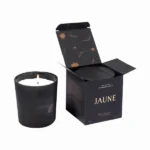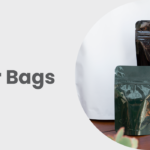What is Varnish?
The varnish is presumed to be just a coating like other protective coverings, such as lacquer, polyurethane, etc. But the varnish is something more. This is the balanced mixture of protective ingredients for a seamless finish of various items, for instance, furniture, floor, doors, windows, packaging, and printing. These components include specific illuminating oils, harmless solvents, etc.
Varnish is quite an old concept and old product. In ancient times, varnish had the same purpose as today, but it had a different composition. Adequate quantities of alcohol and wood sap were mixed to make varnish. Varnish adds beauty and sophistication to things to date, and it ends every process on a good note it has been included in.
Commonly, transparent varnish is renowned around the globe, but now, as technology has transformed the world, you can customize your varnish by choosing different colors and textures. Transparent varnish is good, but tinted varnish enhances the good’s beauty yet retains its natural charm.
How is Varnish Different from Polyurethane?
Technological advancement is refining every industry and setting every other success on the pinnacle of distinctiveness. Polyurethane is not a new concept but a mirror image of varnish with a different mix of components. It is just a synthetic form of varnish. Polyurethane contains liquidated plastic mixed with resin, making it less eco-accommodating than traditional varnish. But polyurethane is a bit more long-lasting.
Another significant difference between polyurethane and varnish is viscosity. Polyurethane is more viscous than varnish because it contains synthetic items like plastic. Hence, it is better for hard and thicker objects with brittle or rough surfaces. It sticks better to them because of more holding power. On the other hand, the varnish is quite runny and thinner. It has reduced sticking capability, making varnish unsuitable for rough surfaces.
As the viscosity difference between varnish and polyurethane is evident, it is seen that polyurethane requires fewer coatings than varnish. Therefore, it is fairly cost-friendly. You can complete the same task with half the amount of polyurethane than varnish.
Benefits of Varnish
Varnish is a hugely important item in many industries that focus on competing on the final outlook of the products. Therefore, it has many advantages and benefits.
Protection Against Staining
Wear and tear of items is common. After a certain time, products deteriorate, leaving a dull outlook. If it is furniture, then the complete image of your home or office might run into havoc. You can lose the vehicle’s value if it has a bad exterior. But a good quality varnish can protect you from these unfortunate incidents or can correct these situations. A good varnish coating helps the good retain its originality and not develop stains or cracks.
Easy Cleaning of Goods
Varnish coating is impervious because it does not stick to different materials easily. Once you have refined varnish coverage on your items or wooden goods, it is easy to clean the stains from dust, dirt, coffee, tea, etc.
Retaining the Original Quality of the items
Varnish is a non-porous coating on different surfaces. Normally, dirt and microbes inhabit the porous surfaces of wood or plastic. It results in the deterioration of the whole look. Once the surface is cleaned and covered with a refine varnish coating, it will act as a barrier to the toxins and keep your items in good condition for years.
Different Types of Varnish
Matte Varnish
The matte surface is the one that is not reflecting. It occurs as a poised and composed facet of the objects that enhance the overall sophistication. It is good for packaging and printing goods because of the refined and subtle depiction of the whole good. This type of varnish is suitable for those objects that have to convey much information. The non-reflective nature does not create hurdles to reading, even from a distance. It is also suitable for packaging those items with a serious cause because it does not add a cheery effect but keeps them grounded and relevant to the cause.
Glossy Varnish
Glossy varnish, on the other hand, is the complete opposite of matte varnish. This coating contains those chemical compounds that reflect light and add shine to the surface. Unlike matte varnish, it is not recommended for highly informative packaging and printing. Rather, it is the best choice to finish the packaging or printing of extravagant items to attract the audience—for instance, glossy varnish prints, gift wrapping paper, birthday or wedding décor items, etc. Glossy varnish is typically more colorful than matte.
Satin Varnish
Sometimes you encounter a situation where you have to add shine and radiance to the packaging or printing, but you also have to maintain the poise.
What should you do in such a case?
Nothing else but choosing satin varnish to meet your demands. This type of varnish is a balanced mixture of lustrous and matte outlook. It keeps the audience’s attention to the striking shine and gives them complete liberty to read whatever is written on the package.
Striking Matte Varnish
This is another type of varnish in which glossy and matte aspects are not merged but kept separated yet together. This technique of using varnish in printing and packaging allows the customer to add shine to certain parts of the packaging or printing and reflectiveness on the others. This is the most commonly used varnished because companies add a glossy touch to their logos, names, and core value. At the same time, information is kept matte for effortless reading and understanding.
Method of Varnish Application
As the varnish is runny and thinner in nature, it cannot be easy to apply it. You must use specific brushes, strokes, and items if you want a seamless finish with the varnish.
- Begin the process by cleaning the surface or the printing machine
- Grab brushes with natural bristles. This will hold the mixture firmly and reduce the wastage
- Apply one coat of varnish onto the packaging or printing surface
- Let the items dry for some time so that the second coating sits finely on the first one
- Apply 3-4 more coatings following the same drying procedure
- If you see some bubbles on the surface, dilute the varnish mixture further and apply that layer as a final layer
Use of Varnish in Printing and Packaging
Seamless Surface
Varnish is the final coating on the packaging or printing of items. It provides a clear and smooth touch to the surface. If it is glossy varnish, your printing or packaging will shine bright. Otherwise, you will have a seamless matte finish.
Raw packaging and printing items have cracks and lines on the surface. Varnish fills these empty spaces and makes the surface look more even from the outside.
Protection from Dirt
As the unfinished packaging and printing have cracks on the surface, dirt settles into them. This tarnishes the complete face of the packaging and printing because the color fade, the material breaks apart, and dirt becomes evident.
A fine layer of varnish fills up these lines, leaving no room for the dirt to settle.
Long Last
The varnish layer is also used to make packaging and printing long-lasting because it does not allow dirt or other toxic materials to destroy the surface. Moreover, it is not a permeable surface, allowing nothing to pass through it and reach the main well.
UV Protection
Whether the varnish layer is matte or glossy, the oils used in varnish have reflective nature. They reflect the light that includes UV radiations. Due to this, your packaging and printing retain their color for a longer time.
Enhance the Beauty
Varnished is also used to enhance the beauty of the packaging and printing by adding a lustrous or matte effect to the surface.







